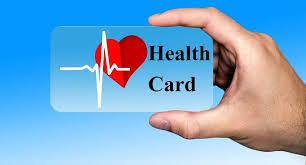Introduction
Attention-Deficit/Hyperactivity Disorder (ADHD) is often associated with childhood, but it can persist into adulthood. Many adults with ADHD remain undiagnosed or misdiagnosed, leading to challenges in various aspects of their lives, including work, relationships, and personal well-being. This guide aims to provide a comprehensive understanding of adult ADHD and offer practical steps for obtaining an accurate diagnosis.
Recognizing ADHD Symptoms in Adults
ADHD symptoms in adults can differ significantly from those in children. While hyperactivity may decrease with age, other symptoms such as inattention, impulsivity, and disorganization often persist. Common symptoms include:
Inattention:
Difficulty focusing on tasks, frequent distractions, and problems with organization. Adults may struggle with managing time, meeting deadlines, and remembering appointments.
Impulsivity:
Impulsive decision-making, interrupting others, and difficulty waiting for one’s turn. This can affect personal and professional relationships.
Hyperactivity:
While less common in adults, restlessness and an inability to relax may still be present. Adults may feel an inner sense of restlessness or agitation.
Emotional Regulation:
Difficulty managing emotions, leading to mood swings, frustration, or irritability. This can impact relationships and self-esteem.
Understanding these symptoms is crucial for recognizing diagnose ADHD in adults in oneself or others and seeking appropriate help.
The Importance of an Accurate Diagnosis
An accurate diagnosis of ADHD in adults is essential for several reasons:
Effective Treatment:
Proper diagnosis allows for tailored treatment plans that address specific symptoms and challenges. Treatment may include medication, therapy, or lifestyle changes.
Improved Quality of Life:
Understanding ADHD can help adults develop coping strategies and improve their overall quality of life. It can also reduce feelings of frustration and self-doubt.
Avoiding Misdiagnosis:
ADHD symptoms can overlap with other mental health conditions such as anxiety, depression, or bipolar disorder. An accurate diagnosis ensures that individuals receive the correct treatment for their specific needs.
Steps to Getting an Accurate Diagnosis
Self-Assessment and Reflection
Before seeking a professional diagnosis, individuals can reflect on their experiences and symptoms:
Symptom Checklist:
Use symptom checklists to identify potential ADHD symptoms. Various online resources and self-assessment tools can help in recognizing patterns.
Personal History:
Reflect on childhood behavior and academic performance. ADHD often starts in childhood, and understanding past experiences can provide valuable insights.
Impact on Daily Life:
Consider how symptoms affect daily functioning, including work, relationships, and self-esteem. Documenting these impacts can be helpful during the diagnostic process.
Consulting a Healthcare Professional
Seeking a professional evaluation is a crucial step in obtaining an accurate diagnosis:
Primary Care Physician:
Start by discussing symptoms with a primary care physician. They can provide initial guidance and referrals to specialists if needed.
Mental Health Specialist:
Consider consulting a psychiatrist, psychologist, or clinical social worker who specializes in ADHD. They have the expertise to conduct a comprehensive assessment.
Diagnostic Criteria:
Healthcare professionals use criteria from the Diagnostic and Statistical Manual of Mental Disorders (DSM-5) to diagnose ADHD. They will assess symptoms, duration, and impairment.
Comprehensive Evaluation
A thorough evaluation typically involves several components:
Clinical Interview:
A detailed interview with a mental health professional to discuss symptoms, medical history, and life experiences. This helps in understanding the full scope of the individual’s condition.
Self-Report Questionnaires:
Completing standardized questionnaires or rating scales that assess ADHD symptoms and their impact on daily life. These tools help in quantifying the severity of symptoms.
Collateral Information:
Gathering information from family members, partners, or close friends who can provide additional insights into the individual’s behavior and functioning.
Differential Diagnosis
ADHD symptoms can overlap with other conditions, so a differential diagnosis is necessary:
Rule Out Other Conditions:
Evaluate other potential causes of symptoms, such as anxiety, depression, or substance abuse. A thorough assessment helps in distinguishing ADHD from other conditions.
Assess Co-occurring Conditions:
Many adults with ADHD have co-occurring conditions. Addressing these conditions alongside ADHD is essential for a comprehensive treatment plan.
Understanding the Diagnosis
Once a diagnosis is made, understanding it is crucial for effective management:
Education:
Learn about ADHD, including its symptoms, causes, and treatment options. Education empowers individuals to make informed decisions about their treatment.
Treatment Options:
Discuss treatment options with a healthcare professional. Treatments may include medication, therapy, or lifestyle modifications. Personalized treatment plans address specific symptoms and challenges.
Support Resources:
Explore support groups, counseling services, and educational resources. Connecting with others who have ADHD can provide valuable insights and support.
Managing ADHD in Adulthood
With an accurate diagnosis, adults with ADHD can implement strategies to manage their condition effectively:
Medication:
Medication can help manage symptoms and improve functioning. Discuss medication options with a healthcare professional to find the most suitable treatment.
Therapy:
Cognitive-behavioral therapy (CBT) and other therapeutic approaches can help develop coping strategies and address emotional and behavioral challenges.
Lifestyle Changes:
Implement organizational strategies, time management techniques, and self-care practices to improve daily functioning and overall well-being.
Support Systems:
Build a support network of friends, family, and professionals. Support systems provide encouragement and practical assistance in managing ADHD.
Conclusion
Understanding ADHD in adults and obtaining an accurate diagnosis is essential for effective management and improved quality of life. By recognizing symptoms, seeking professional evaluation, and exploring treatment options, adults with ADHD can address their challenges and achieve their full potential. A comprehensive approach to diagnosis and management ensures that individuals receive the support and resources they need to thrive.






